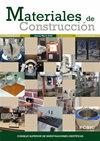Conductive concrete made from recycled carbon fibres for self-heating and de-icing applications in urban furniture
IF 1.5
4区 工程技术
Q3 CONSTRUCTION & BUILDING TECHNOLOGY
引用次数: 12
Abstract
This paper presents a broad experimental study performed at laboratory and industrial facilities to develop conductive concrete for self-heating and de-icing applications in urban furniture. Self-heating capacity is achieved by the application of electric current through a highly dense matrix containing recycled carbon fibers and graphite flakes. Prisms and slabs were fabricated with two different conductive concretes and electrode configurations to characterize the electrical properties and heating performance. Finally, 3 benches with different electrode disposals were fabricated to assess the heating capacity in real-scale applications. The results presented indicate promising results about the use of recycled carbon fibers for electrothermal concrete applications and identify the electrode configuration that allows the most efficient heat transfer and reduction of temperature gradients within the heated element. Real-scale tests show that the current technology developed is potentially applicable at de-icing applications in climates where temperatures remain within the range of -3 or -5 oC.由回收碳纤维制成的导电混凝土,用于城市家具的自加热和除冰应用
本文介绍了在实验室和工业设施中进行的广泛实验研究,以开发用于城市家具自加热和除冰应用的导电混凝土。自加热能力是通过电流通过含有回收碳纤维和石墨片的高密度基质来实现的。用两种不同的导电混凝土和电极结构制造棱镜和平板,以表征电性能和加热性能。最后,制作了3个具有不同电极处理的工作台,以评估实际应用中的加热能力。所给出的结果表明了关于将回收碳纤维用于电热混凝土应用的有希望的结果,并确定了允许最有效的热传递和降低加热元件内温度梯度的电极配置。实际规模测试表明,当前开发的技术可能适用于温度保持在-3或-5℃范围内的气候中的除冰应用。
本文章由计算机程序翻译,如有差异,请以英文原文为准。
求助全文
约1分钟内获得全文
求助全文
来源期刊

Materiales de Construccion
工程技术-材料科学:综合
CiteScore
3.20
自引率
9.50%
发文量
38
审稿时长
>12 weeks
期刊介绍:
Materiales de Construcción is a quarterly, scientific Journal published in English, intended for researchers, plant technicians and other professionals engaged in the area of Construction, Materials Science and Technology. Scientific articles focus mainly on:
- Physics and chemistry of the formation of cement and other binders.
- Cement and concrete. Components (aggregate, admixtures, additions and similar). Behaviour and properties.
- Durability and corrosion of other construction materials.
- Restoration and conservation of the materials in heritage monuments.
- Weathering and the deterioration of construction materials.
- Use of industrial waste and by-products in construction.
- Manufacture and properties of other construction materials, such as: gypsum/plaster, lime%2
 求助内容:
求助内容: 应助结果提醒方式:
应助结果提醒方式:


